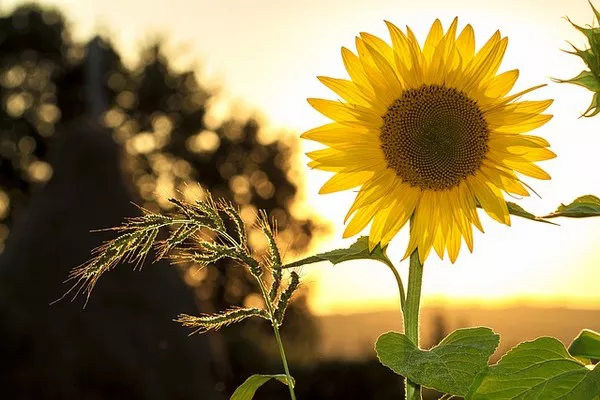Sunflowers, with their vibrant blooms and towering stalks, are not only a beautiful addition to gardens but also a valuable resource with numerous practical applications. While most people associate sunflowers with their seeds and oil production, the stalks often go unnoticed and underutilized. In this article, we will explore the various ways you can put sunflower stalks to good use, highlighting their potential in sustainable practices and resource management.
1. Harvesting and Preparing Sunflower Stalks
Before delving into the uses of sunflower stalks, it’s important to understand the process of harvesting and preparing them. Once the sunflower heads have matured and the petals have dried and fallen off, cut the stalks at the base, leaving a few inches above the ground. Allow the stalks to dry naturally for a few weeks until they become stiff and brittle. Once dried, remove any remaining leaves, flowers, or seeds from the stalks. Now you’re ready to explore the versatile uses of sunflower stalks.
2. Biomass and Biofuel Production
One of the primary uses of sunflower stalks is in biomass and biofuel production. Sunflower stalks contain a significant amount of cellulose, which can be converted into biofuels such as ethanol or used to generate heat and electricity through combustion. By utilizing sunflower stalks as an energy source, we reduce our reliance on fossil fuels and contribute to a more sustainable future. Biomass power plants or biorefineries can process sunflower stalks along with other agricultural residues to produce clean and renewable energy.
3. Animal Bedding and Feedstock
Sunflower stalks can serve as excellent bedding material for animals, particularly livestock and poultry. The dry and fibrous texture of sunflower stalks makes them comfortable for animals to rest on, while their absorbent nature helps manage moisture and odor. Additionally, sunflower stalks can be used as a feedstock for livestock, especially when they are young and tender. However, it’s important to note that sunflower stalks should be properly processed or mixed with other animal feed to ensure optimal nutritional balance.
4. Mulching and Composting
Sunflower stalks are an ideal candidate for mulching and composting applications. When chopped or shredded, the stalks can be spread around garden beds or cultivated areas to act as a protective layer. Mulching with sunflower stalks helps suppress weed growth, retain soil moisture, regulate soil temperature, and improve overall soil health. In addition, sunflower stalks can be added to compost piles, contributing valuable organic matter and carbon-rich material. As they break down, sunflower stalks enhance soil fertility and structure, promoting healthier plant growth.
5. Crafting and Decorative Purposes
Sunflower stalks possess a unique and aesthetically pleasing appearance, making them popular for crafting and decorative purposes. The tall and sturdy stalks can be used as stakes or supports for climbing plants, providing a natural and rustic touch to garden structures. Sunflower stalks can also be woven together to create baskets, wreaths, or decorative art pieces. Their hollow centers make them easily adaptable for creating various shapes and designs. Furthermore, sunflower stalks can be dried, painted, and incorporated into floral arrangements, adding an intriguing element to bouquets or home decor.
6. Sustainable Building Materials
With increasing interest in sustainable construction practices, sunflower stalks have emerged as a potential alternative for building materials. The fibrous nature of sunflower stalks, combined with natural binders, can be compressed to form boards or panels. These eco-friendly materials can be used for non-structural elements such as wall partitions, ceiling tiles, or insulation. Sunflower stalk-based building materials offer several advantages, including low embodied energy, carbon sequestration potential, and biodegradability at the end of their lifespan.
7. Environmental Benefits and Conclusion
Utilizing sunflower stalks effectively contributes to environmental sustainability. By harnessing their biomass for energy production, we reduce greenhouse gas emissions and promote renewable energy sources. The use of sunflower stalks as animal bedding and feedstock enhances waste management practices in livestock farming. Employing sunflower stalks for mulching, composting, crafting, and building materials promotes resource conservation and reduces reliance on synthetic alternatives.
In conclusion,
sunflower stalks are a versatile and valuable resource with numerous applications. From energy production to animal bedding, mulching to crafting, and sustainable building materials, these often-overlooked stalks possess immense potential. By harnessing the full potential of sunflower stalks, we can embrace more sustainable practices, reduce waste, and contribute to a greener future.


